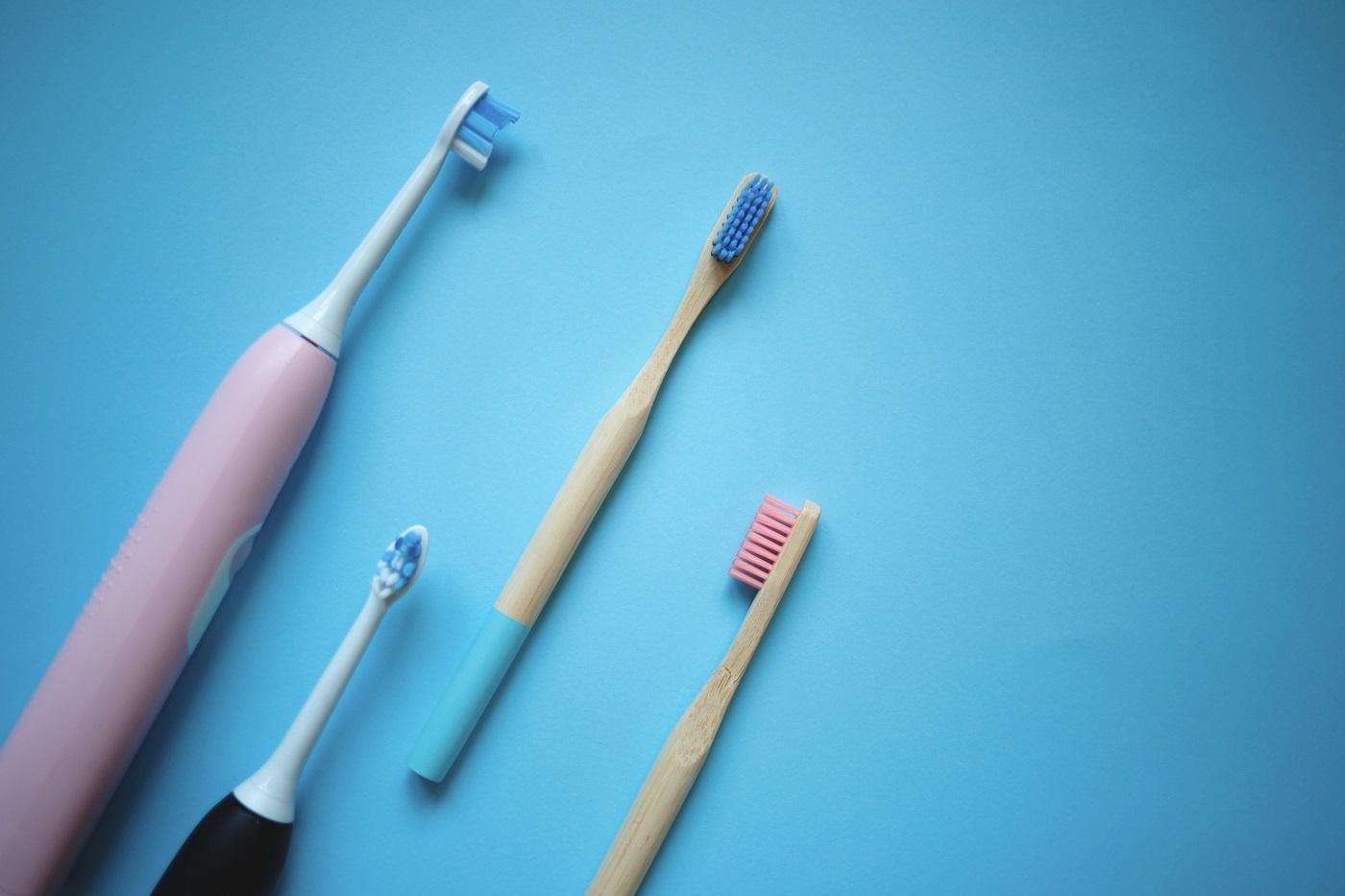
20 Apr How do I choose the right toothbrush?
The selection of a toothbrush is important not only for the effectiveness of cleaning, but most importantly for the health of our gums. There are so many different models and types of toothbrush available on the market today that patients often find it difficult to choose. In this post, we will introduce and briefly characterise the most important options.
Hardness and bristle type
The first point to always pay attention to is the hardness of the bristles in the toothbrush. There are three degrees of hardness: soft, medium and hard. Most adults use medium toothbrushes, which are versatile and definitely suitable for everyday use. They allow the surface of the teeth to be effectively cleaned while not causing excessive gum irritation.
Soft toothbrushes are designed for children and those suffering from gum disease or hypersensitivity. They are very delicate, so as a rule they should not cause unpleasant discomfort after brushing, such as bleeding. Sometimes, however, patients complain that they feel their teeth are not cleaned after using a soft-bristled toothbrush. Often, however, such impressions are quite subjective. If a good quality toothbrush is chosen, the softness of the bristles should not affect the effectiveness of the cleaning. In this case, it is advisable to talk to your dentist when you visit the dental surgery.
It is also worth talking to your dentist if you want to choose a hard-bristled toothbrush. This type of bristle is made for special tasks. It is primarily used in toothbrushes designed to help whiten teeth. They may also work well for those who are particularly prone to the formation of stains or tartar on their teeth. Unfortunately, due to their strong abrasive properties, they can not only cause gum irritation, but also contribute to enamel damage. Therefore, even with completely healthy teeth and gums, they are only indicated for short-term use.
In addition to the degree of hardness, toothbrushes may also differ in the type of bristles used. We distinguish between cleaning bristles, whose primary function is to thoroughly clean the teeth, and polishing bristles, which, in addition to removing stains, smooth the enamel and provide a shiny surface.
A simple manual or a more advanced one?
Choosing the degree of bristle hardness seems trivial compared to choosing the right type of toothbrush, as there are now at least several, and there are even more differences between them. In addition to standard manual toothbrushes, there are electric, sonic, ultrasonic and ionic toothbrushes. We will not describe the technology used in them, as this is a very broad topic requiring a separate entry. In this case, we are more interested in the effectiveness and safety of the application.
In terms of safety, the degree of hardness of the bristles is again crucial, which we determine based on individual needs. Those with severe gum problems and oral inflammation may want to consider purchasing a toothbrush that uses ultrasonic technology, as their manufacturers say they are particularly recommended for this type of condition (among other things, they strengthen the walls of blood vessels to prevent bleeding).
At opinions vary on the effectiveness of different types of toothbrushes. Manufacturers of the most technologically advanced toothbrushes argue that they are exceptionally effective. Is this really the case? There are studies that show that both an electric toothbrush and a sonic toothbrush are able to remove approximately 10% more plaque than a manual toothbrush with a single use. Long-term use (more than three months) increases the effectiveness to as much as 20%. At the same time, the superiority of modern toothbrushes over standard toothbrushes is unproven. Traditional methods also show high efficacy as long as we brush our teeth correctly and regularly.

